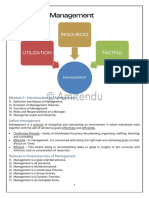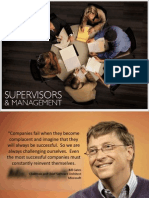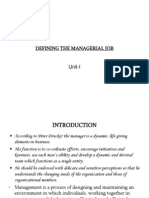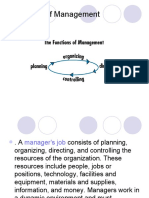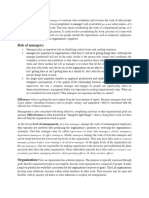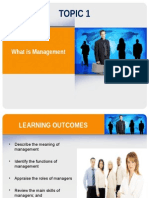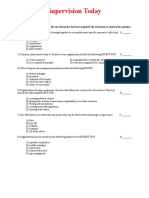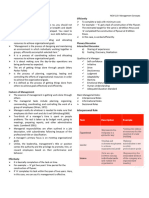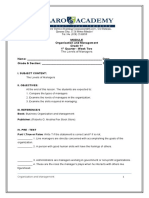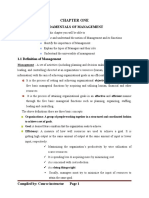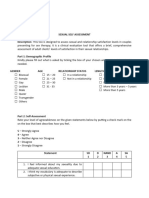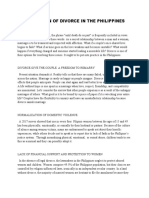0% found this document useful (0 votes)
38 views25 pagesChapter1 Student Notes
This chapter outlines the supervisory role within management, emphasizing the importance of understanding management principles, competencies, and the balance between output and employee well-being. It discusses the hierarchical structure of management, detailing the functions and responsibilities of supervisors compared to other managerial levels, and highlights the transition into supervisory roles. Key concepts such as performance management, systems thinking, and the essential skills and characteristics required for effective supervision are also covered.
Uploaded by
edgeambCopyright
© © All Rights Reserved
We take content rights seriously. If you suspect this is your content, claim it here.
Available Formats
Download as PDF, TXT or read online on Scribd
0% found this document useful (0 votes)
38 views25 pagesChapter1 Student Notes
This chapter outlines the supervisory role within management, emphasizing the importance of understanding management principles, competencies, and the balance between output and employee well-being. It discusses the hierarchical structure of management, detailing the functions and responsibilities of supervisors compared to other managerial levels, and highlights the transition into supervisory roles. Key concepts such as performance management, systems thinking, and the essential skills and characteristics required for effective supervision are also covered.
Uploaded by
edgeambCopyright
© © All Rights Reserved
We take content rights seriously. If you suspect this is your content, claim it here.
Available Formats
Download as PDF, TXT or read online on Scribd
/ 25






